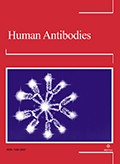Authors: Gebru, Addis Adera | Mosadeghrad, Ali Mohammad | Sari, Ali Akbari
Article Type:
Research Article
Abstract:
BACKGROUND: The research was assessed the Ethiopian Emergency Medical Services Case teams’ and officers views on Emergency Medical services in Ethiopia. The aim of study was to present the point of views, prospect and priorities of Emergency medical services case teams and its coordinator along some main dimensions of emergency medical services, such as Leadership, Motivation, Structure, and Assurance for implementation. METHODS: Six focus group discussion were facilitated with EMS case teams, focal persons and FMoH emergency medical services case teams from December to August, 2017 in all regions chosen of the study. The focus group
…techniques were used in the study as qualitative research method for examination of viewpoints of case team members towards to the emergency medical care system and overall pre-hospital and at hospital emergency care services. The discussion was addressing the topics of: general aspects of emergency Medical Services (EMS) and which occupations included in EMS; possibilities to importance review EMS issues based on Leadership, Motivation, Structure, and Assurance for implementation of EMS in the country. Finally, thematic analysis was used to evaluate data sets which collected during the focus group discussion. RESULTS: There were 6 focus groups in total: an Emergency medical services case teams, officers, Directorates, and integrated disease prevention and control program coordinators groups in each of the regional, city Administration Health Bureau and Federal Ministry of Health in Ethiopia. Findings of the thematic analysis were summarized along the following dimensions: Leadership, Motivation, Structure, and Assurance for implementation. The result shown that lack of resources, shortage of training, lack of professionals and community awareness on EMS, immaturity of EMS strategic plan and lack of revision, workload as a result of limited skilled manpower, lack of partnerships and collaboration on EMS and lack of research and community services evidence are among factors affecting the quality EMS and continuity of the program at various health care facilities at the regional and national levels. CONCLUSION: The study shows views of the Ethiopian Emergency Medical Services Case teams’ and officers in Emergency Medical services in Ethiopia. The participants were considered determining factors of the EMS were rather similar among the participated regional, city Administration Health Bureau and Federal Ministry of health. Nonetheless, there was some degree of difference among those participated institutes. Especially, as a national level, Ethiopian Ministry of Health is exists only one emergency medical service directorate that leading the whole national activities. Therefore, EMS program need to respond to the challenges by respondents to articulate emergency medical services policies appropriate to Ethiopia, including the pre-hospital, at hospital care system and Ambulance services with more reformed professional skills and case team work at country level including all regions, Zone, Woreda (Districts) and other related sectors.
Show more
Keywords: Emergency medical services, leadership, motivation, structure, assurance, ethiopia
DOI: 10.3233/HAB-190383
Citation: Human Antibodies,
vol. 27, no. S1, pp. 53-71, 2019
Price: EUR 27.50




